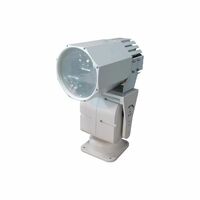Categories
Tags
-
#LED Submarine Navigation Lights
#Stealth Major Light
#LED Marine Cabin Lights
#LED Marine Navigation Signal Lights,Marine Spotlights,Marine Searchlight,
#Explosion-proof fire Emergency Lights
#LED Marine Navigation Signal Lights
#Explosion-proof Fluorescent Pendant Lights
#Marine Reading Lights
#Marine Navigation Lights
#LED Light
#LED Marine Lights
#Marine LED Lights
#Marine Searchlight Bulb
#Marine Searchlights
#Explosion Proof Lighting
#LED explosion proof lighting
#Marine Waterproof Switch and Sockets
#Boat Cabin Lighting
#Marine Spotlights
#Marine Floodlights
#marine cabin lighting
#LED Soft Light Strips
#Marine Navigational Lights
#f Marine Searchlights
#Morse Code Signal Light
#Ship Stern Lights
#Ship Cabin Lighting Fixtures
#LED Marine searchlights
#Explosion Proof Lights
#marine Explosion Proof Lights
#Explosion-proof lights
#Navigation Lights
#Marine Lighting
#CCS Certification
#LED Explosion Proof Flood Lights
#Installing Marine Searchlights
#Marine Explosion-Proof Light
#marine searchlight
#LED marine searchlight
#High-Power Marine Searchlights
#Yushuo
#Marine Light
Archives
How Smart Electronic Control Systems Improve Marine Searchlight
-
Out at sea, marine searchlights are the “watchful eyes” of any vessel. With the integration of intelligent electronic control systems, a profound revolution in user experience is taking place. These systems are enhancing marine searchlights in multiple dimensions, unlocking their full potential.
One - button Operation for Effortless Control
Conventional marine searchlights are often cumbersome to operate, requiring crew members to manually adjust components. In rough seas or during emergencies, this can be impractical and time-consuming. Intelligent electronic control systems simplify this with one-button operation. Whether navigating through a storm or conducting a night-time search-and-rescue mission, crew members can adjust the light beam’s angle easily. They just need to press a button. They can also change the range and brightness using remote control. For instance, in emergency rescue scenarios, switching to “search mode” triggers a wide-ranging, high-intensity light output. This saves precious time. It ensures effective operations.
Smart Scene Switching for Precise Illumination
Marine operations involve a variety of scenarios, each with unique lighting requirements. Intelligent electronic control systems offer pre-set scene modes to cater to these needs. In navigation mode, the system focuses the light beam to illuminate the path ahead. This helps crew members identify navigational markers. It also helps them avoid obstacles. When docking, switching to berthing mode widens the light beam. It enhances short-range illumination. This provides a clear and safe working environment for personnel on the dock. This ensures that the searchlight delivers the exact lighting needed for each situation.
Real - time Monitoring for Enhanced Reliability
The stability of marine equipment is crucial for safety and efficiency. Intelligent electronic control systems continuously monitor the searchlight’s performance, including light intensity, temperature, and voltage. If any abnormality is detected, the system quickly diagnoses the issue, identifies the fault source, and alerts the crew. For example, if LED light sources show signs of dimming due to prolonged use, the system warns the crew. It also automatically adjusts the current to extend the light’s lifespan. Additionally, with smart temperature control algorithms, the system ensures the searchlight operates at an optimal temperature. This is true even in harsh marine environments. This reduces the risk of heat - related failures.
Remote Intelligent Management for Efficient Maintenance
In modern shipping management, remote monitoring of marine equipment is essential. Intelligent electronic control systems enable remote management through satellite communication or ship - to - shore networks. Shore - based managers can access real - time data on the searchlight’s operation, such as runtime and energy consumption. During maintenance, this feature allows technicians to remotely diagnose issues. They can prepare necessary tools and spare parts in advance. This reduces downtime and minimizes potential economic losses from equipment failures.
Intelligent Integration for a Smart Ship Lighting Ecosystem
Intelligent electronic control systems can integrate with other ship systems to form a smart ship lighting ecosystem. The ship's Automatic Identification System (AIS) detects nearby vessels. The searchlight system then automatically adjusts the light beam. This highlights the ship's outline and prevents collisions. It can also work with surveillance systems. It automatically illuminates areas of interest if abnormal activity is detected. This provides clear visual support for monitoring operations. It enhances the ship’s overall safety.
The intelligent electronic control system is the brains behind modern marine searchlights. It offers one-button operation. It provides smart scene switching. It features real-time monitoring, remote management, and intelligent integration. These features have transformed the user experience of marine searchlights. For shipping companies and vessel operators, choosing marine searchlights with intelligent electronic control systems is a smart decision. This choice leads to more efficient marine operations. Visit Yushuo website to discover how intelligent marine searchlights can illuminate your voyages with advanced technology.

